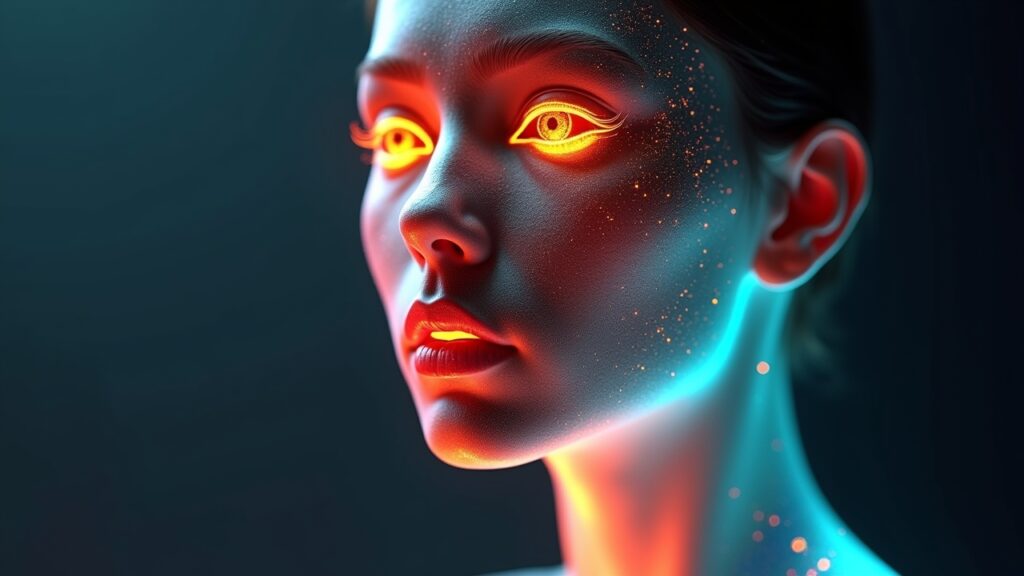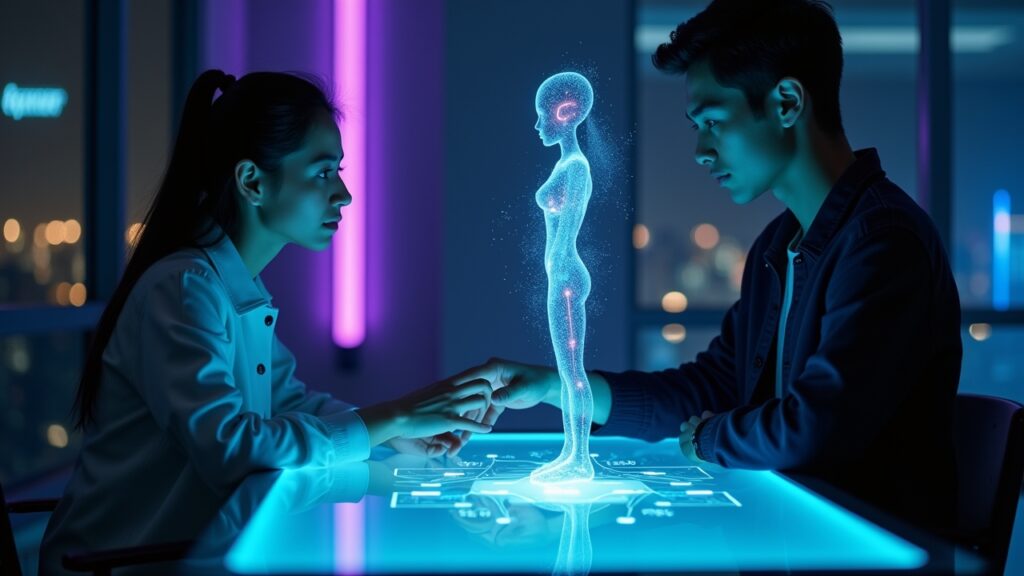Advertisements
Did you know that by 2025, the emotion recognition market is expected to hit $56 billion? That’s right – machines are getting scary good at figuring out if you’re happy, sad, or just hangry. I’ll never forget the first time I saw computer vision emotion recognition in action. It was at a tech conference in 2019, and this demo literally called me out for looking bored during a presentation (guilty as charged!).
Let me tell you, this technology is changing everything from how we shop to how therapists help their patients. And honestly? It’s both fascinating and a little bit creepy.
What Exactly Is Computer Vision Emotion Recognition?

Okay, so imagine teaching a computer to read faces like your mom could when you lied about eating cookies before dinner. That’s basically what we’re talking about here. Computer vision emotion recognition uses artificial intelligence to analyze facial expressions and figure out what emotions people are feeling.
The tech works by detecting facial landmarks – things like your eyebrows, mouth corners, and eye positions. Then it compares these patterns to thousands of examples it’s learned from. Pretty wild, right?
I remember trying to build my own emotion detector back in college using OpenCV. Man, was that a disaster. My program thought everyone was angry all the time – turns out I’d messed up the training data and only included photos of my roommate during finals week!
The Technology Behind Reading Digital Faces
The magic happens through something called deep learning neural networks. These systems analyze facial action units – basically the tiny muscle movements that create expressions. There’s about 43 facial muscles involved in making expressions, and the AI tracks how they move.
Most systems today use convolutional neural networks (CNNs) that can process images super fast. They look for patterns in pixel data that correspond to different emotions. The accuracy rates are getting insane too – some systems claim up to 96% accuracy for basic emotions.
Here’s where it gets really interesting though. The best systems don’t just look at your face in isolation. They consider context, body language, and even voice tone when available. It’s like having a really perceptive friend who always knows when something’s up.
Real-World Applications That’ll Blow Your Mind
You’re probably already interacting with emotion recognition without knowing it. Ever notice how some video games adjust difficulty based on your frustration level? Yep, that’s emotion AI at work. Affectiva, one of the leaders in this space, has their tech in millions of devices.
In healthcare, therapists are using it to help treat autism and depression. The software can pick up on micro-expressions that humans might miss. I watched a demo where it helped a therapist realize their patient was masking anxiety with fake smiles – something that took weeks to discover traditionally.
Retail is going nuts with this stuff too. Some stores use emotion recognition to see how customers react to displays or products. Kinda makes you wanna wear sunglasses everywhere, doesn’t it? But honestly, when it’s used ethically, it can really improve customer experiences.
The Challenges Nobody Talks About
Here’s the thing – this technology isn’t perfect. Cultural differences in expressions can really throw it off. What looks like anger in one culture might be concentration in another. I learned this the hard way when my emotion recognition project kept misreading my Japanese colleague’s neutral face as disapproval.
Bias is another huge issue. Most training datasets have been historically skewed toward certain demographics. This means the AI might be less accurate for people with darker skin tones or from different ethnic backgrounds. It’s something the industry is working on, but we’re not there yet.
And don’t even get me started on privacy concerns. The idea that cameras could be analyzing our emotions everywhere we go? That’s some serious dystopian stuff that keeps me up at night sometimes.
Getting Started with Emotion Recognition Projects
If you’re itching to try this yourself, I’d recommend starting with TensorFlow or PyTorch. There’s tons of pre-trained models available that you can fine-tune for your needs. The FER2013 dataset is a great starting point – it’s got about 35,000 facial expression images labeled with emotions.
Pro tip from my many failures: start simple. Don’t try to detect 20 different emotions right away. Begin with the basic six: happiness, sadness, anger, fear, surprise, and disgust. Once you nail those, you can add more nuanced emotions.
Also, lighting matters way more than you’d think. Bad lighting was responsible for like 80% of my early project failures. Make sure your training data includes various lighting conditions, or your model will freak out every time someone stands near a window.
The Future Is Already Getting Weird

Where this is all heading is both exciting and terrifying. We’re seeing emotion recognition being integrated into cars to detect driver drowsiness, in education to gauge student engagement, and even in job interviews (which seems problematic to me, but that’s another rant).
The technology is getting sophisticated enough to detect fake emotions too. Imagine a world where you can’t fake enthusiasm in a Zoom meeting anymore! Some researchers are even working on systems that can predict emotional states before they fully manifest.
As someone who’s been tinkering with this tech for years, I’m convinced we need strong ethical guidelines yesterday. The potential for good is massive, but so is the potential for misuse. We gotta be smart about how we deploy this stuff.
Your Next Steps in the Emotion AI Journey
Look, whether you’re excited or creeped out by computer vision emotion recognition, it’s not going away. This technology is becoming part of our daily lives faster than you can say “facial action coding system.” The key is understanding it so you can make informed decisions about when and how you interact with it.
If you’re a developer, now’s the time to start experimenting. If you’re a business owner, think carefully about the ethical implications before jumping in. And if you’re just a regular person? Maybe start practicing your poker face – you know, just in case.
Want to dive deeper into the wild world of AI and emerging tech? Check out more mind-bending articles at Tech Digest. We’re always exploring the latest tech trends that’ll make you go “wait, that’s actually possible now?”




[…] or revolutionizing your industry. Want to dive deeper into emerging tech trends? Check out more insights at Tech Digest – we’re always exploring what’s next in the digital […]